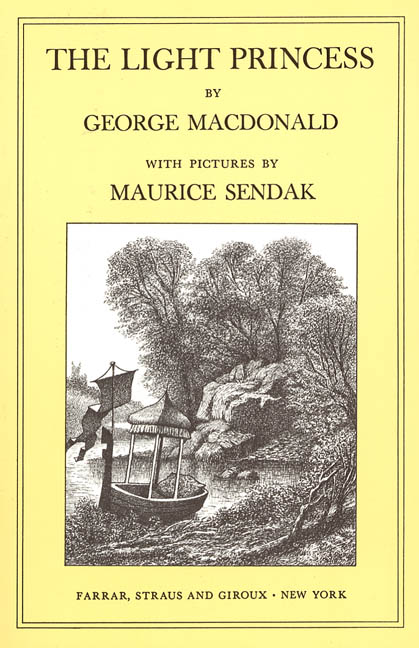If Phantastes had not been, perhaps, a complete success, artistically or financially, and if MacDonald found himself writing in a more realistic vein in his next few novels, he found that he could not quite give up writing fairy tales altogether. He gathered some of these into his enormously long three volume realistic novel Adela Cathcart, the story of an annoying and sickly young Victorian woman who is All Mysteriously Ill, with what might now be called clinical depression. (I don’t mean to imply that people, or fictional characters, with clinical depression are annoying, just that Adela is.) To cheer her up, the narrator, a Dying Old Bachelor with Depressing Thoughts proposes a regimen of storytelling. Since apparently no one in this novel has anything else to do, everyone enthusiastically agrees, and the storytelling begins after some more tedious dialogue.
Adela Cathcart could, I suppose, be considered an early interstitial work, intermingling, as it does, short stories, rather tedious church sermons, hymns, social commentary, mediations on death and snowstorms, and dreadful poetry. But if few these days can be bothered to read the entire framework novel, much less the sermons (did I mention, long and tedious?) some of its short stories have become recognized classics in their own right, appearing in numerous anthologies. Perhaps the best known of these is the novella The Light Princess, one of MacDonald’s unquestioned fantasy masterpieces, and considerably better than the book it was doomed to appear in.
Drawing from several nursery rhymes, many quoted directly in the tale, and some of Grimms’ fairy tales—in particular, Briar Rose, or the Sleeping Beauty, a tale MacDonald knew quite well, The Light Princess is possibly be the most delightful of MacDonald’s stories, full of wit and humor, and—for once—tightly plotted. The characters in the novel, admittedly, find much to criticize, but I suspect that most readers will be chuckling.
As in the tale of Sleeping Beauty, The Light Princess begins when a king and queen forget to invite a certain evil fairy to their little daughter’s christening. You would think that fairy tale parents would know better by now. (The Adela Cathcart characters voice other objections: they don’t think that church services should appear in fairy tales, and they don’t think that evil characters or evil deeds can appear in churches.) The irritated fairy—who, in this tale, is the king’s sister, making it even worse—retaliates by taking away the little princess’ gravity. (This is achieved, the narrator explains, by a careful study of physics, although for some reason our physicists have so far failed to achieve similar results.)
The spell has some immediate and decidedly negative practical effects: the princess simply cannot stay on the ground, unless someone literally hangs on to her. On the bright side, this means she can be easily tossed from one person to another. (The story fails to explain how she avoids what would seem to be the inevitable concussions.) More worrisome: the princess simply cannot be serious, for an instant, laughing at anything and everything. This makes her a delight to be with, but also means that no one can persuade her of the seriousness of her condition, increasing the risk that she will eventually just float away. (She voices a wish to be a kite.)
Even metaphysics is of no help whatsoever.
Eventually, the princess finds a lake, where she can swim, and find something new—heaviness. And she also, of course, finds the inevitable prince, willing to blacken shoes and make other sacrifices for her sake. (The audience of the framework novel finds some of their dealings quite, quite improper, but, well, they are Victorians. I just mention this in case you are easily shocked.)
The frivolousness, of course, is meant in part as a contrast to the incredibly depressed character of the novel (who does cheer up after hearing the tale.) But something more is going on here: an illustration of MacDonald’s belief that love is needed to create balance in life. (This is also a theme of the novel, if not as charmingly told there.) And it is a repeat of his belief that love is not, as is commonly said, blind, but rather, something that allows clear sight. Until the princess learns love, she cannot see that she even has a problem. It is a frivolous tale with unexpected depths, and if the audience in the novel thinks that the frivolity is a problem for the serious parts, and vice versa, audiences outside the novel will, I think, enjoy the tale far more.
I cannot recommend the novel unless you are looking for a cure for insomnia, in which case, did I mention the tedious sermons? But I can highly recommend The Light Princess as a bit of lighthearted fun, and an excellent example of the fine work done by Victorian fantastists. You can find it in either a very long Chapter Five of its novel, or independently in various anthologies or online.
Mari Ness is now worried that her two cats will begin a formal study of physics and finally learn how to get rid of gravity, the only thing keeping them from utter destruction. She lives in central Florida.










